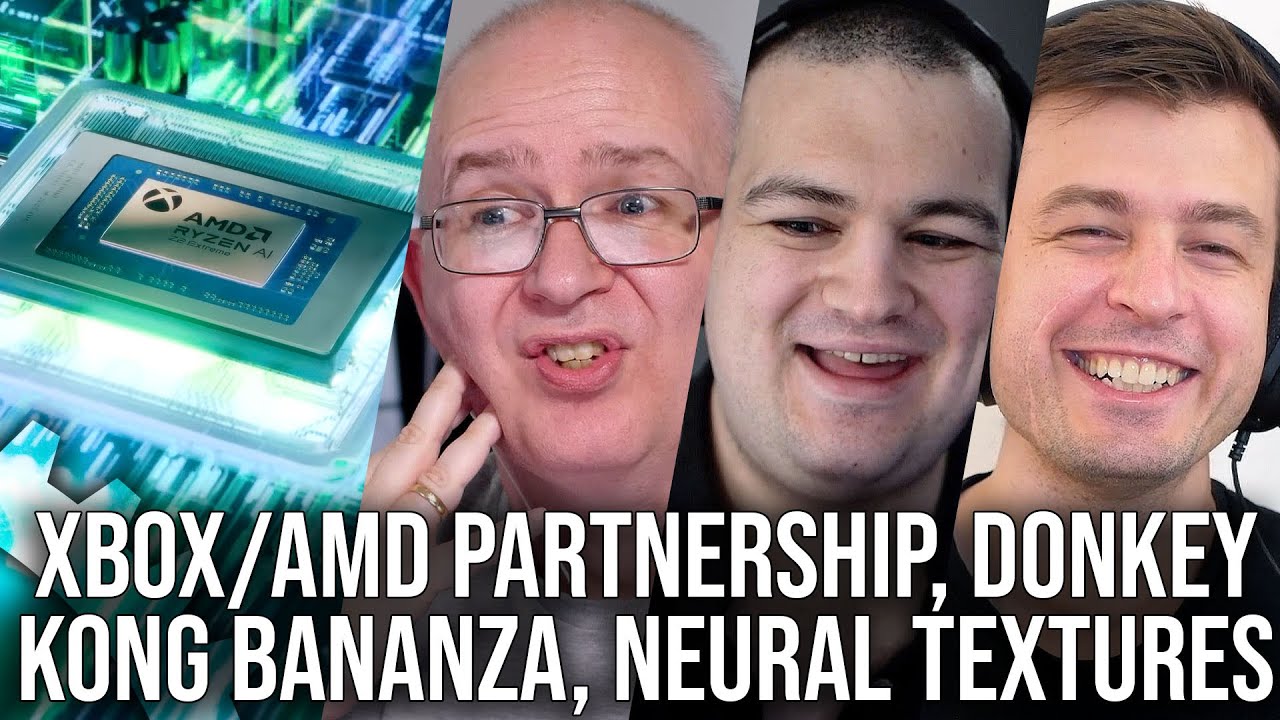DF Direct Weekly #219 discusses Microsoft’s new multi-year partnership with AMD to develop next-gen Xbox hardware focused on Windows-based devices, alongside Nintendo’s upcoming Donkey Kong Bonanza game featuring sandbox-style gameplay and destructible environments. The episode also covers advancements in neural texture compression technology for improved real-time rendering, challenges of running demanding games like Ark: Survival Evolved on Switch hardware, and insights into the evolving gaming ecosystem including AMD’s market position and the future of console generations.
The latest edition of DF Direct Weekly (#219) delves into several significant developments in the gaming and technology sectors, starting with Microsoft’s announcement of a strategic, multi-year partnership with AMD to power the next generation of Xbox devices. The discussion highlights the ambiguity surrounding the future Xbox hardware, emphasizing a shift towards Windows-based, PC-like devices including handheld consoles and cloud gaming. Key points include the mention of backward compatibility, though details remain vague, and questions about the timeline, hardware customization, and how Microsoft plans to differentiate Xbox PCs from traditional Windows PCs. The hosts speculate on the possibility of a more iterative hardware release cycle akin to PC upgrades and the challenges Microsoft faces in unifying the Xbox and Windows gaming ecosystems.
The conversation then shifts to Nintendo’s recent Donkey Kong Bonanza Direct, showcasing a game that appears graphically similar to Mario Odyssey but with denser, more destructible environments and a sandbox-style gameplay approach. The game features a variety of mechanics such as climbing, extensive environmental destruction, and a mix of 3D and 2D platforming elements. While visually impressive and polished, there are concerns about frame rate stability and the complexity of balancing open-ended gameplay with traditional platforming challenges. The game’s setting, narrative ties to the Donkey Kong lore, and its July 17th release date were also discussed, with some lighthearted speculation about its canonical status within Nintendo’s universe.
In technology news, the hosts explore a new paper on neural texture compression, an advancement in real-time rendering that leverages machine learning to infer textures dynamically rather than loading large texture files from disk. This technique promises significant reductions in texture memory usage and bandwidth requirements while maintaining high visual quality through improved texture filtering methods. The development is seen as a major step forward, potentially influencing future game design and hardware architecture by reducing reliance on ever-increasing GPU memory and SSD speeds. The integration of such machine learning techniques is expected to become more widespread as hardware support from AMD, Intel, and Nvidia matures.
The show also revisits the infamous original version of Ark: Survival Evolved on Nintendo Switch, noting that despite the game’s notorious performance issues and low resolution, it still runs on the newer Switch 2 hardware, albeit with persistent frame time spikes and stuttering. Comparisons with the improved Grove Street Games port reveal better performance and streaming but still highlight the limitations imposed by the game’s original design and the Switch hardware. This segment underscores the challenges of backward compatibility and running demanding games on handheld consoles, illustrating the trade-offs between hardware upgrades and software optimization.
Finally, the hosts answer supporter questions covering a range of topics including AMD’s dominant position in the gaming hardware market, Sony’s potential strategies regarding PC ports of first-party games in light of Microsoft’s evolving Xbox ecosystem, and the future of console generations as Microsoft shifts focus to Windows-based devices. They also discuss Apple’s advancements with Metal 4 graphics technology and the potential for increased Mac gaming coverage. The episode concludes with reflections on the scalability of open-world games like The Witcher 4 and the ongoing evolution of PC and console gaming technologies, emphasizing the dynamic and rapidly changing landscape of the industry.
